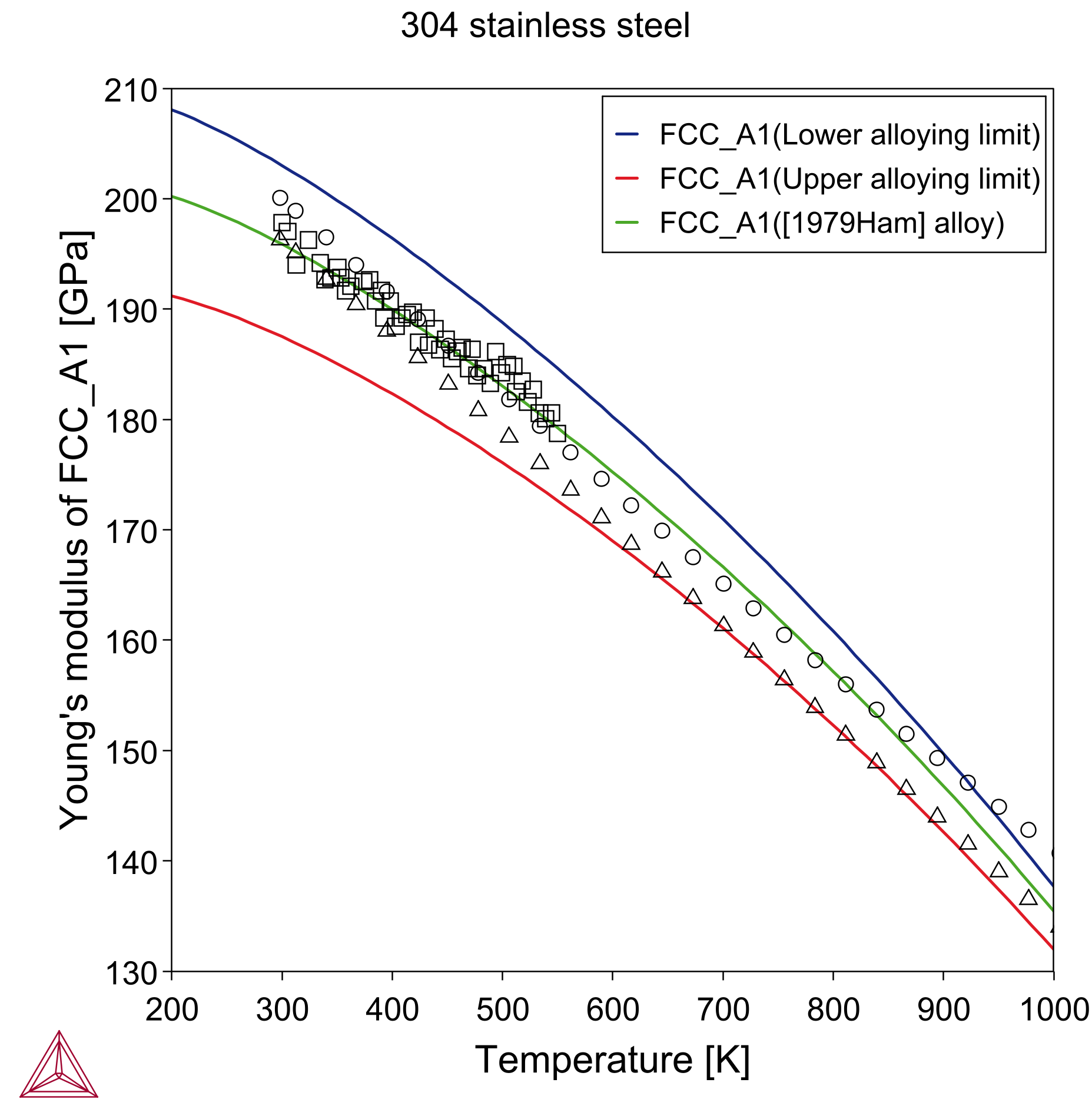Young’s Modulus of a 304 Stainless Steel
The TCS Steel and Fe-alloys Database (TCFE) has elastic properties included starting with version 14 (TCFE14).
This is an example where elastic constants and Young’s modulus are calculated as functions of temperature for 304 stainless steel, where FCC_A1 is used to describe the austenite phase. The chemical composition of 304 stainless steel is Fe (balance), 18-20 Cr, 8-12 Ni, < 2 Mn, < 1 Si, < 0.045 P, < 0.03 S, < 0.1 N, < 0.08 C (wt%).
For the calculation of Young’s modulus, these compositions are shown:
- Fe-18Cr-8Ni (lower alloying limit)
- Fe-20Cr-12Ni-2Mn-1Si-0.045P-0.03S-0.1N-0.08C (upper alloying limit)
- Fe-18.5Cr-9.58Ni-1.22Mn-0.47Si-0.029P-0.012S-0.031N-0.047C (1979Ham)
The resulting values of Young’s modulus are compared to experimental information from [1979Ham; 2008Dig] and the calculated predictions are in good agreement.
Figure 1: Young’s modulus of austenitic 304 stainless steel (Fe-18.5Cr-9.58Ni-1.22Mn-0.47Si-0.029P-0.012S-0.031N-0.047C wt% together with typical upper and lower alloying limits) as function of temperature compared with experimental data from [1979Ham; 2008Dig].
References
[1979Ham] J. P. Hammond, L. T. Ratcliff, C. R. Brinkman, M. W. Moyer, C. W. Nestor, Jr, “Dynamic and static measurements of elastic constants with data on 2 1/4 Cr--1 Mo steel, types 304 and 316 stainless steels, and alloy 800H” (Oak Ridge, TN, USA, 1979).
[2008Dig] R. M. Digilov, Flexural vibration test of a cantilever beam with a force sensor: fast determination of Young’s modulus. Eur. J. Phys. 29, 589–597 (2008).
